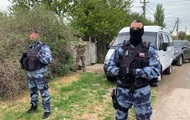According to Raj Rajkumar, a professor of electrical and computer engineering, the “full self” system should also be tested.
The US government has launched a formal investigation into Tesla Autopilot’s partially automated control system following a series of collisions with special-purpose parked cars, the Associated Press reported.
The investigation concerns 765,000 cars – almost all that Tesla has sold in the United States since the model’s launch in 2014. Accidents identified by the National Highway Traffic Safety Administration (NHTSA) have injured 17 people and one has been injured. died.
According to NHTSA, in 11 crashes since 2018, Tesla cars have collided with vehicles at accident sites where traffic lights, illuminated arrow signs or cones warning of danger have been used.
The investigation is another signal that NHTSA under Joe Biden’s government is taking a firmer stance on automated road safety. In the past, the agency was reluctant to regulate new technology for fear of hindering the introduction of potentially life-saving systems.
The investigation includes the entire range of Tesla, models Y, X, S and 3 from 2014 to 2021.
The National Transportation Safety Board (NTSB), which has also been investigating some of the crashes involving Tesla since 2016, has recommended that NHTSA and Tesla limit the use of the Autopilot system. In addition, the NTSB recommends that NHTSA require Tesla to introduce a better system to ensure that drivers are careful when driving.
Last year, the NTSB blamed Tesla, drivers and NHTSA’s liberal rules for two crashes in which Tesla cars crashed under passing trucks with semi-trailers.
The Tesla car crashes with special regime, which are being investigated by the authorities, began in January 2018 in California, when Tesla with the Autopilot system crashed into a parked fire truck with lights on, which partially blocked the lanes.
The investigation may result in withdrawal from the market or other enforcement action by NHTSA.
Tesla uses cameras, a lot of electronics and sometimes radar to locate objects, identify them and decide in which direction the car should move. However, according to Raj Rajkumar, a professor of electrical and computer engineering at Carnegie Mellon University, the company’s radar was willing to give “false positive” signals and stop the car after identifying overpasses as obstacles.
Tesla has now eliminated radar and is using cameras and thousands of images to identify obstacles. According to Rajkumar, the system works well at most sites, but there are problems with parked cars with a special traffic regime and with perpendicular trucks. According to him, the initial images and training of the system are not enough. “Almost by definition, training (of the system) will never be good enough,” he says.
Tesla also allows selected owners to test the so-called. “complete self-government” system. Rajkumar believes that this should also be investigated.
–


